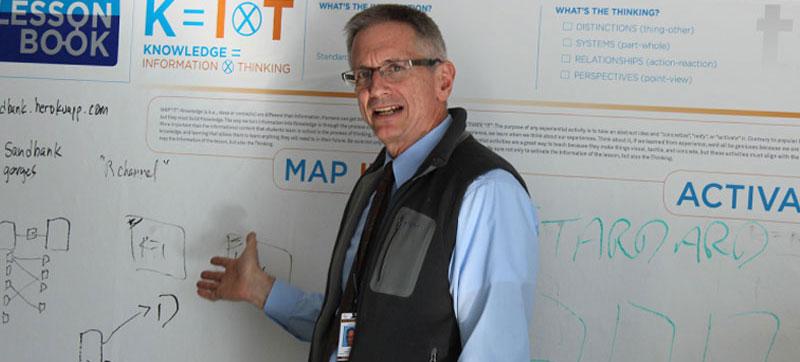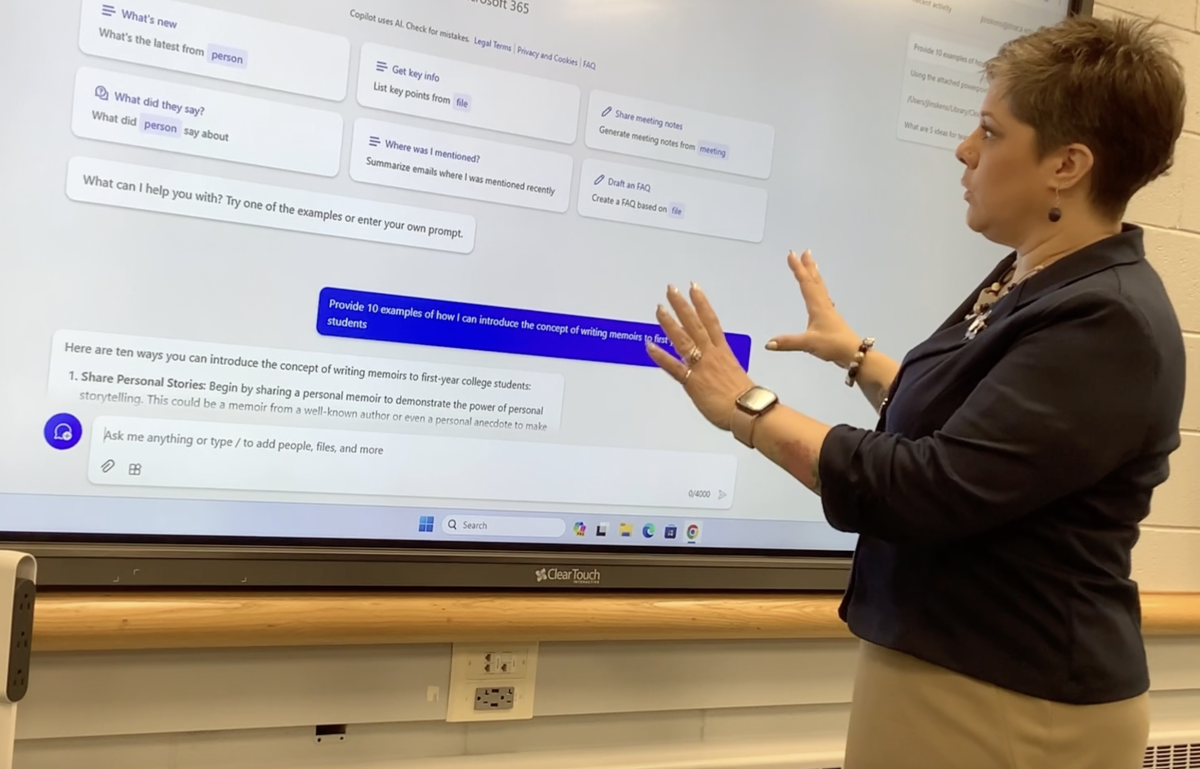The new model allows students to draw on walls and tables. The design encourages efficient thinking and engagement among students, Lee Ginenthal, a teacher on special assignment in the Ithaca City School District, said. The design is based on research by Derek Cabrera, a resident of Ithaca and a renowned educational theorist.
“What [the Distinction, Systems, Relationships and Perspectives model] does is it gives you an awareness of that thinking process, which is called metacognition — thinking about thinking so you can be more aware of the way you structure information and convert it into meaningful knowledge,” Cabrera said.
Other features of the classrooms include one-way mirrors to remind students of how they look to outsiders, and to allow teachers to observe classes. Teachers specially trained by Cabrera to teach in these new classrooms also use thinking blocks to help students understand concepts.
Cabrera said he was inspired to do this work when he first started teaching in the graduate and undergraduate level.
“I was surprised to learn that kids could be very good at doing school,” he said. “They could get great grades on tests or write a paper … But if they were given more novel problems to solve, they had greater difficulty. They were, in a sense, information-full but knowledge-able.”
Luvelle Brown, superintendent of the ICSD, said this initiative was funded by money set aside to replace broken furniture in classrooms.
“We decided to purchase the things that meet the needs of our young people with the existing dollars,” Brown said.
In addition to using the existing funds, ICSD also used a $50,000 innovation state grant to fund the project.
Ginenthal, who has been an educationist for nearly 40 years, worked closely with Brown, Cabrera and his co-researcher Laura Colosi to implement the design.
“What we’ve realized is that you can teach people all kinds of new ways of teaching, but when they go back to their classroom, the physical structure of the classroom encourages us to teach as we have always taught before,” Ginenthal said.
He said based on the cortical homunculus — a pictorial representation of the human body indicating the brain’s reception of sensory information — most of the input comes from our hands, eyes, nose and mouth.
“But how do we do most of our teaching?” he said. “We talk at people. They have to listen. This should be telling us that we have to make things visual and that we need to make them tactile.”
Cabrera is also working on a project with the U.S. Department of Agriculture to promote water education in schools. He said undergraduate and graduate institutions could also benefit from this model.
Brown said he saw the need for a change in the classroom when he heard suggestions at a meeting with the district’s student advisory group.
“They want to be engaged differently,” he said. “They were struggling with sitting down all day. They were struggling with the typical wooden chairs. They asked us to do something.”
Student behavior in the model classrooms was noticeably different from that in normal classrooms, Crystal Sessoms, a sixth grade special-ed teacher at DeWitt, said.
“We had a discussion between students about why they wrote what they did, their thinking behind how this is going to help them to plan and write their essay,” she said. “That was discussion that we weren’t hearing as much in the other classrooms.”
Being able to write on the walls was exciting, said Tomiyinna Johnson, a DeWitt sixth-grader, said.
“It was different because I am not used to showing anyone except the teacher my work,” she said.
Ginenthal said the school district hopes to have one model classroom in each school building, including the high school, within the next year.







